
Aims
My study investigated the social behaviour and distance of a mated red panda pair and their cub from its 3rd to 5th month of life, and the impact of external variables such as the visitors’ presence and temperature on their behaviour.
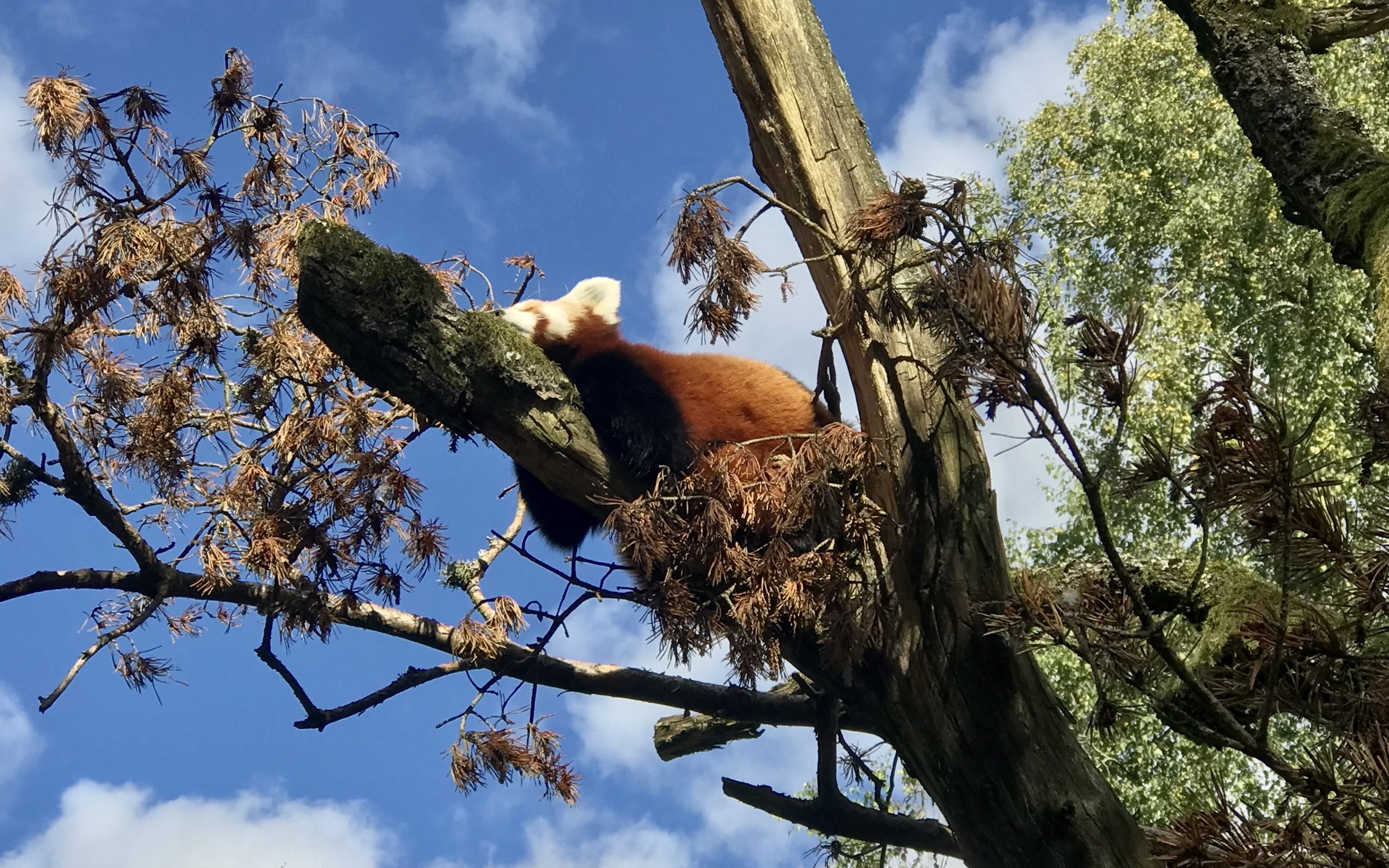
My findings

The most frequently displayed behaviours (Resting and Moving) and the correlations between cub growth-related behaviours and time are in line with previous studies. The peak activity rate corresponded to the feeding routine and shifted accordingly when the routine differed. Changes in distances between the individuals were linked to the cub’s growth. The activity rate and one category of distance correlated with ambient temperature, but it is more likely that this was related to the cub maturing than the actual temperature. As for the impact of the visitor’s presence, the red pandas’ activity rate was significantly higher than when the zoo was closed. Finally, the “red panda experience” elicited a higher frequency of natural behaviours such as Food foraging, Alert and Exploratory before the meal compared to normal days.

Discussion
MOST FREQUENTLY OBSERVED BEHAVIOURS
In my study, Resting and Moving were the most frequently observed behaviours which corroborates the literature. Resting was not frequent for the cub probably because it mainly stayed in the den at this age, where it was not visible. For the same reason, grooming was not the third most frequently performed behaviour as stated in the literature.
Resting was negatively correlated with time for the adults likely due to their preference to rest inside when it is not sunny and cold (the study was held in October and November). In addition, studies demonstrated that over 3 months postpartum the time allocated to rest, by the mother, decreases for physiological reasons.
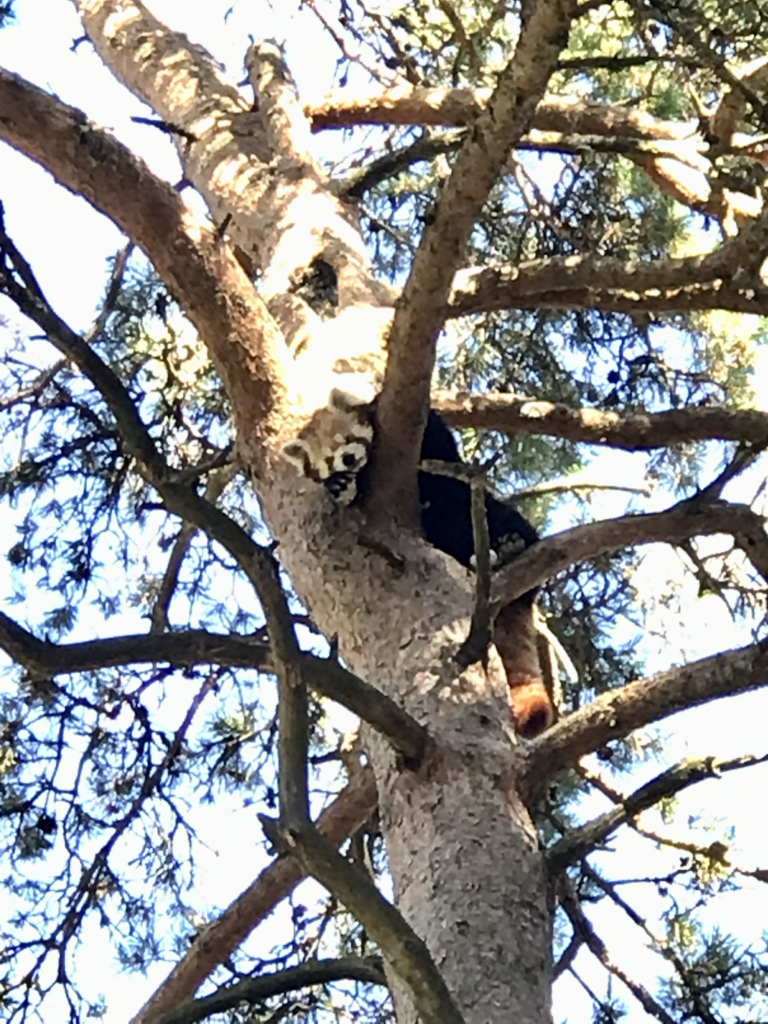
Mother’s alertness and father’s aggressions
The mother was more frequently Alert than the male likely because of the cub. The red pandas’ enclosure was less than 1 meter from the outdoor enclosure of spotted hyenas (Crocuta crocuta). During the period of data collection, the zoo’s spotted hyenas were having social issues, leading to loud fights including barks. The red panda mother was very sensitive to those vocalisations and always climbed to the highest point and was alert.
Over the weeks Laya and Wanju were significantly more frequently Very close and less frequently Far, suggesting that the mother was more careful when her cub was out. Furthermore, Alert was the mother’s third most frequently observed behaviour but negatively correlated with time. Besides, the frequency of Laya and Shifu being Very close significantly increased over the time, as well as the number of Aggression for the male. Aggression was mainly observed between the male and his cub and at the end of the data collection, which has been noticed to sometime happen in captive red panda.
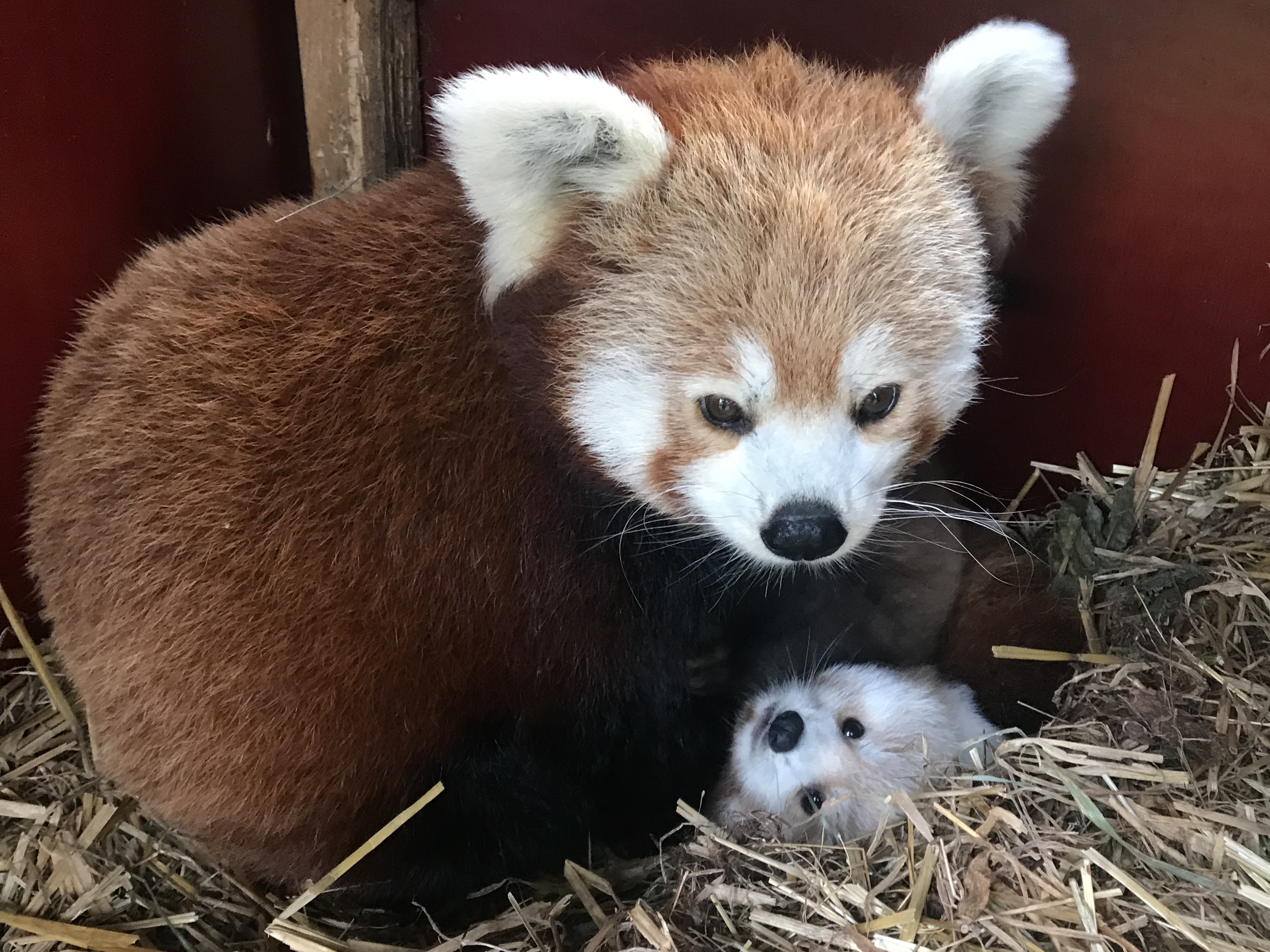
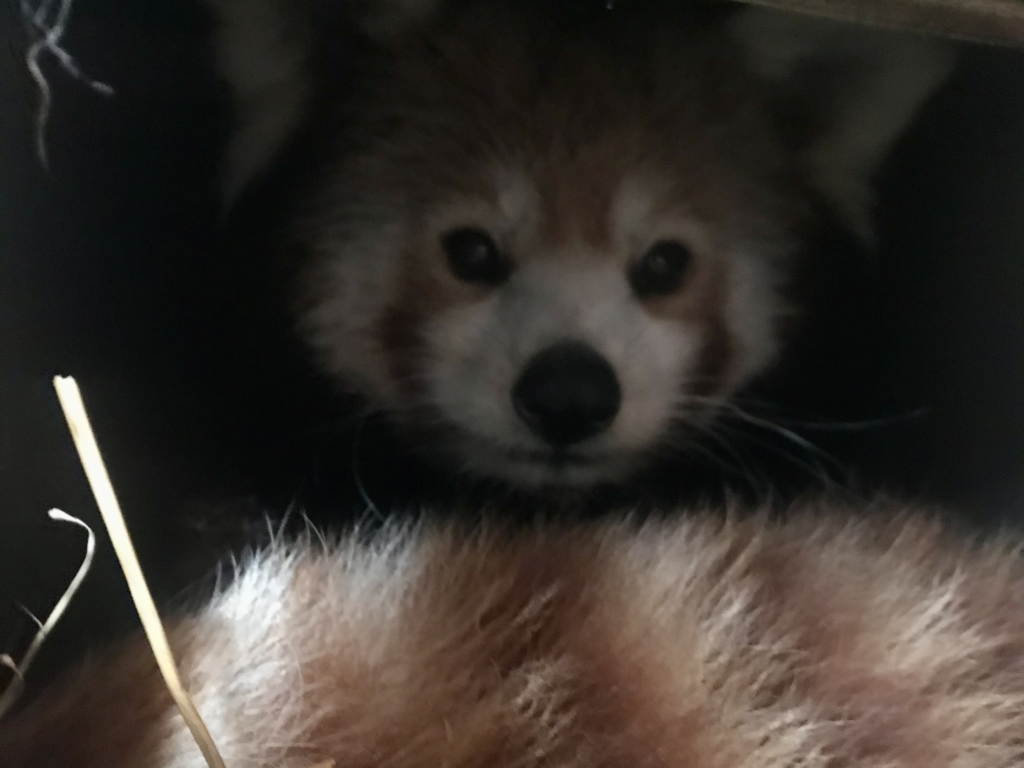
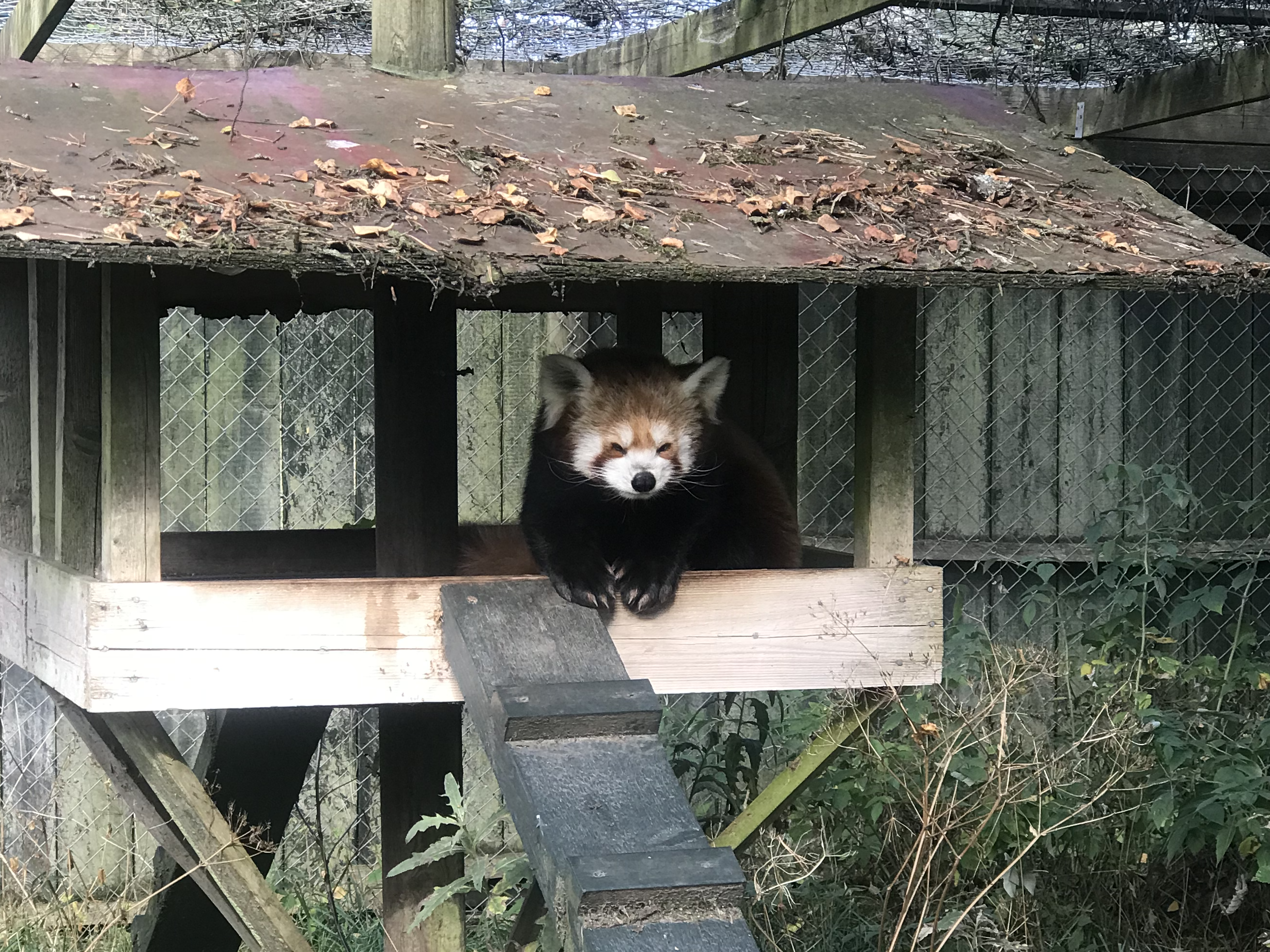
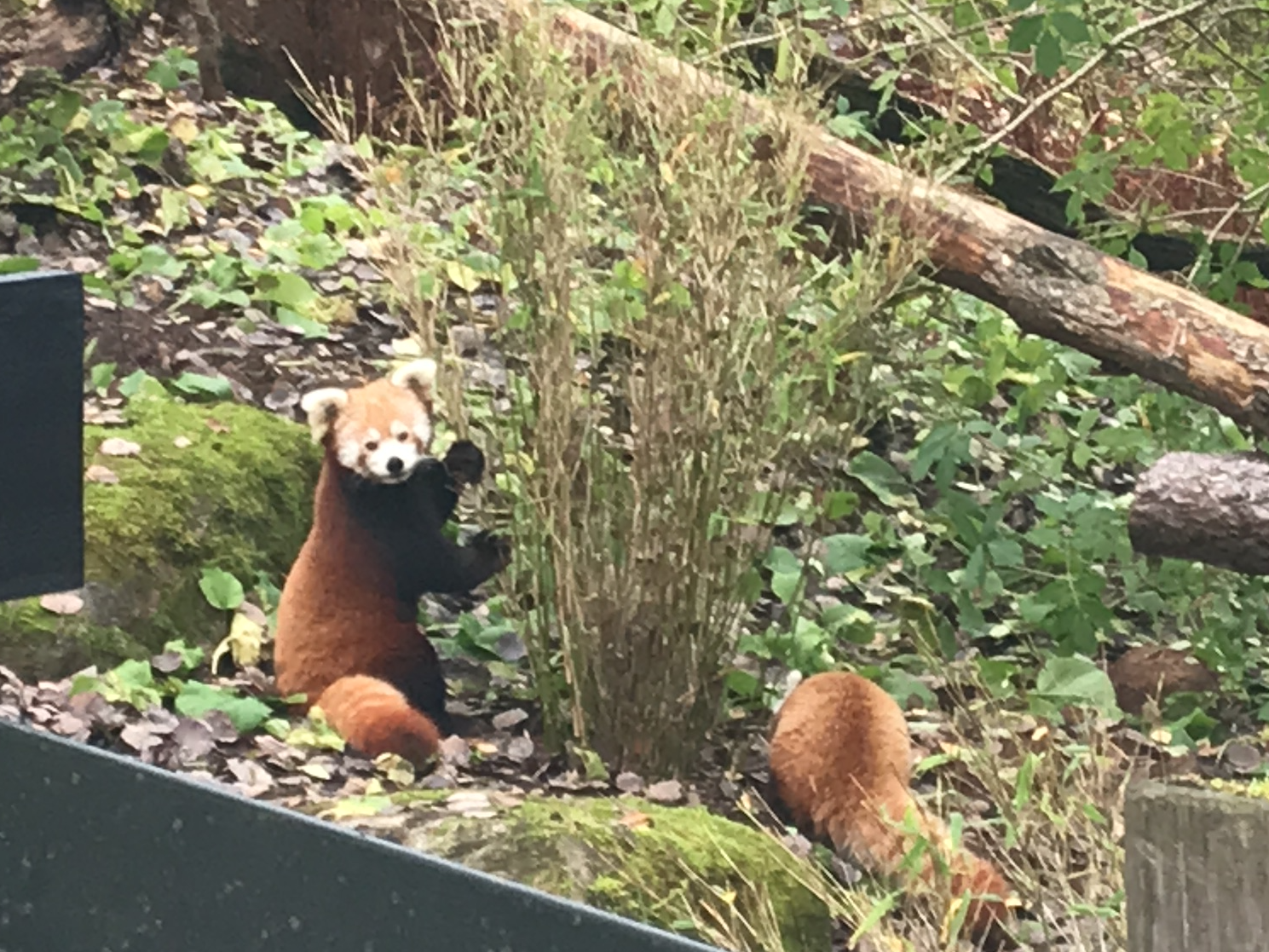
Effects of mealtime on red pandas’ behavior
In accordance with the literature, the peak hours of the studied red pandas corresponded to the feeding routine imposed by humans and shifted when the mealtime was delayed. In fact, when the “red panda experience” occurred, morning mealtime was delayed of 2 hours and so the peak hour too. In a certain way, this mealtime shifting was perceived as enriching by the animals. Prior to the mealtime, I observed that some behaviours increased in frequency and new were performed compared to normal days without “red panda experience”. Furthermore, the individuals were 31% less Out of sight on days with the “red panda experience”. This suggests that changing mealtimes every other day or introducing irregular mealtimes may increase the frequency of natural behaviours, and therefore improve the animal’s welfare. Environmental enrichment also improves breeding, and rearing success and increases the chances of successful reintroduction into the wild. In addition, in the middle of the data collection period, bamboo and berry plants were planted in the outdoor enclosures, giving a novel opportunity to Wanju, the mother, to show to her cub how to use these novel food sources. In fact, I observed Laya learning how to eat bamboo from those plants.
impact of visitors on red pandas’ behavior
In the presence of visitors, the activity rate of the red pandas was significantly higher. The “red panda experience” occurred during the same week as the zoo was open to the public. Therefore, this finding can either be an unintended positive effect of the “red panda experience”, being perceived as enriching by the red pandas, so having an enrichment-like role; or be related to the general presence of visitors. In addition, the morning peak hour of activity in the presence of public, shifted to an hour later, likely due to the “red panda experience” again as half (5 days/9) of the mealtime was 2 hours later. Perhaps, these findings should be taken with a grain of salt because they might not be caused by the zoo opening but the implications of the “red panda experience”, as well as the short period of time of data collection in the presence of visitors (9 days versus 41 days without public).
impact of Temperatures on red pandas’ behavior and distance
Finally, I investigated the possible effects of temperature on the activity budget of the red pandas. The mother’s activity rate was positively correlated with temperature. This can be linked to motherhood as she was increasingly more active, over the time, to accomplish her mother role. Furthermore, the inter-individual distance Very close was negatively correlated with temperature for all animals. Here, too, this may be the consequence of the cub’s growth as well as the mating period approaching, therefore more incidents of aggression were observed and Wanju teaching her offspring how to perform natural behaviours.
Red pandas, a solitary species
My study provides new insights into the social dynamics of red pandas. As red pandas are solitary, it is not surprising that across all individuals they were mostly Far from each other and due to the maternity the second most frequent distance was Touching. In fact, Far was the most frequent distance between the adults, and, cub and father; and the second most frequent one between mother and cub. Mother and cub were principally Touching.
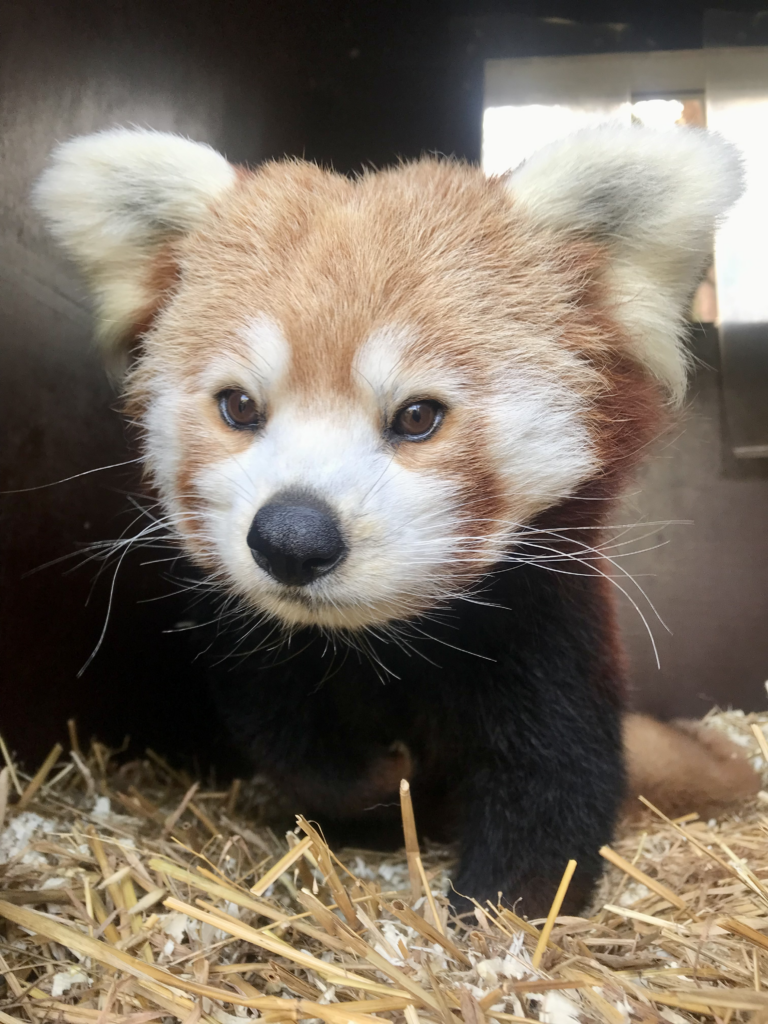

Limitations and perspectives
The present study has limitations and could be improved by studying more than one mated pair and its offspring. They were only observed during daytime in autumn from the outside of the enclosure. However, my study provides new perspectives of the social dynamics and behaviour during maternal care in captive red pandas, as well as of new types of enrichment (“red panda experience”) and effects of visitors on the animal welfare. Future studies could use infrared cameras in the indoor areas, particularly in dens, and perhaps GPS tracking collars to further investigate social dynamics in red pandas during maternal care. Moreover, it would be interesting to examine the effects of regular enrichment use on maternal behaviour and the mother’s stress related to the cub growth.